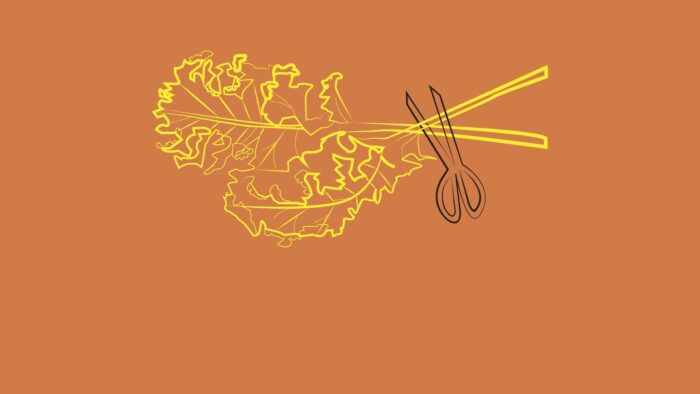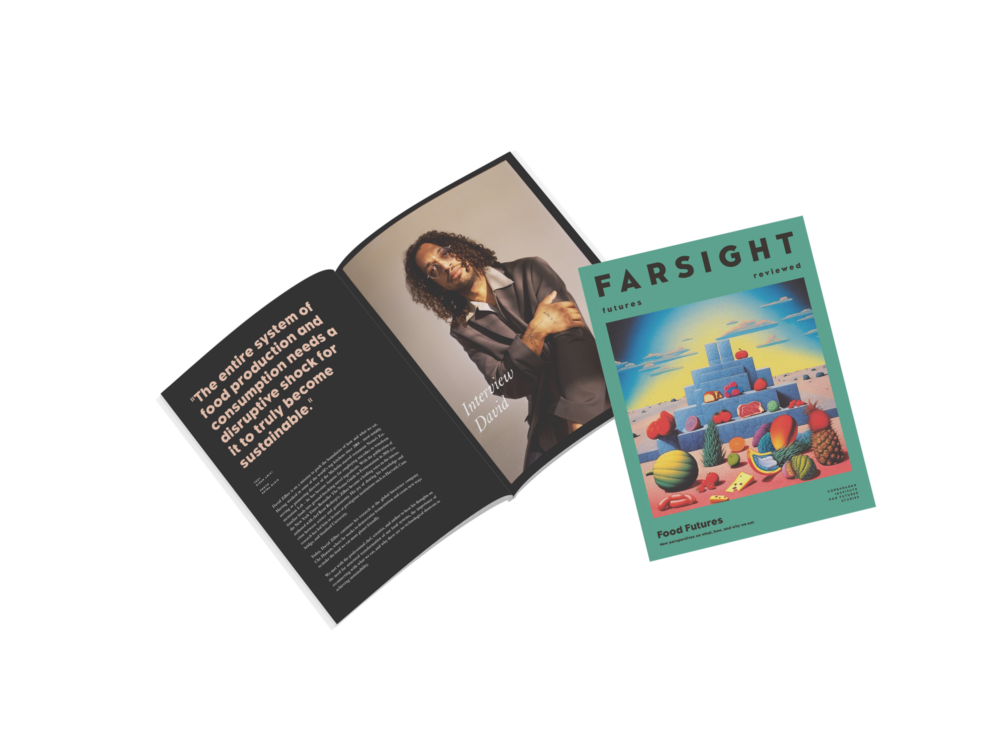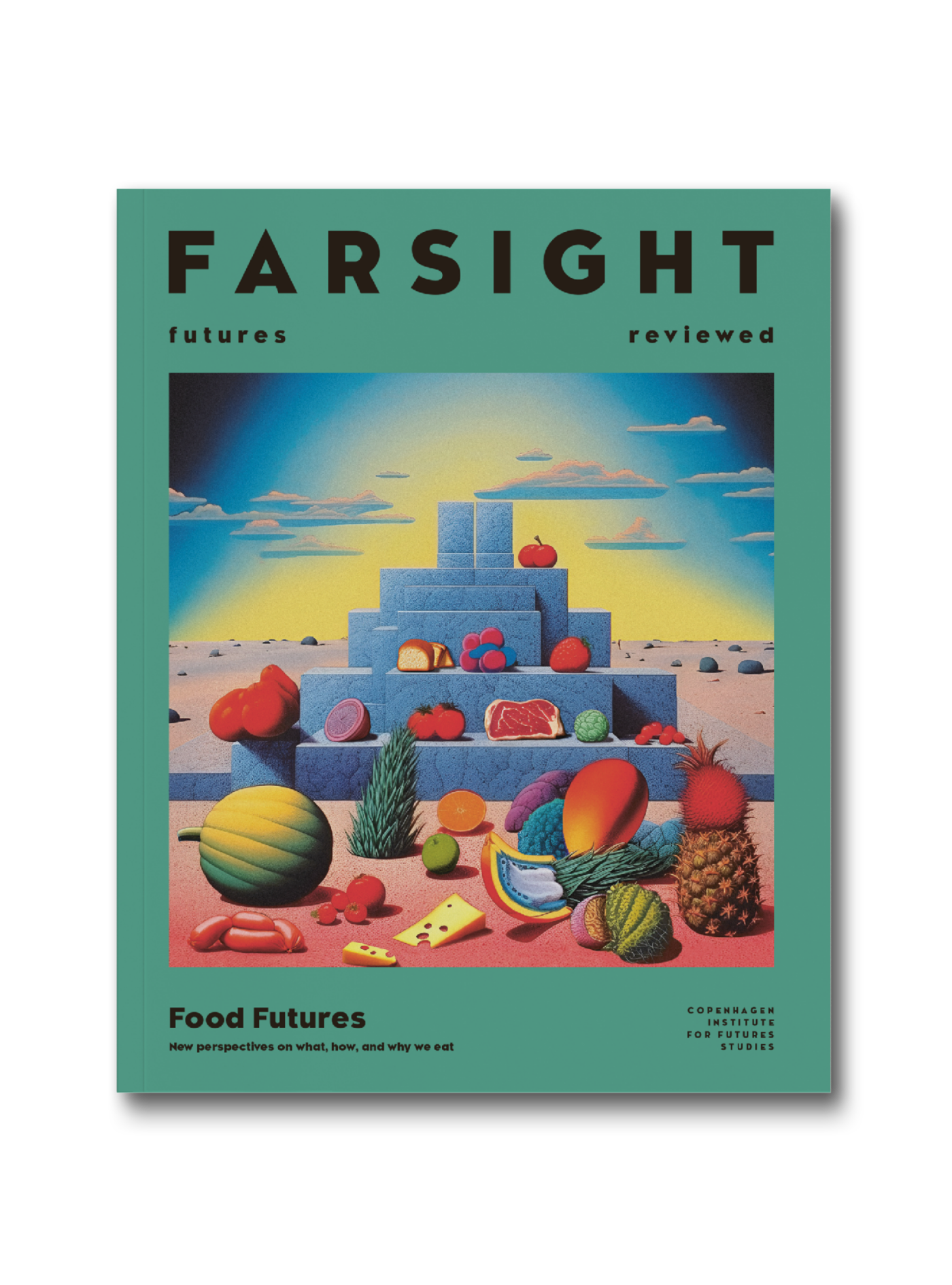
In turn, we use cookies to measure and obtain statistical data about the navigation of the users. You can configure and accept the use of the cookies, and modify your consent options, at any time.

An Interview With David Zilber
Meet the professional chef, scientist, and author on a mission
to make the food we eat more planet-friendly.
Photo: Petra Kleis
David Zilber is on a mission to push the boundaries of how and what we eat. Having worked in some of the world’s top kitchens since 2004 – most notably serving as pioneering director of the Michelin-starred restaurant Noma’s Fermentation Lab – he has become famous for employing microbes to transform familiar foods into ground-breaking novel ingredients. With the publication of the New York Times Bestseller The Noma Guide to Fermentation in 2018 (co-authored with chef René Redzepi), Zilber became a leading voice in the intersection between science and gastronomy. His joy of sharing his knowledge and research has led him to lecture at prestigious institutions such as Harvard, Cambridge, and Stanford University.
Today, David Zilber continues his research at the global bioscience company Chr. Hansen, where he works to democratise fermentation and create new ways to make the food we eat more planet friendly.
We met with the professional chef, scientist, and author to hear his thoughts on the need for structural transformation of our food systems, the importance of reconnecting with what we eat, and why there are no technological shortcuts to achieving sustainability.
Having worked both as a chef and a food scientist, in what ways have you seen your outputs collide or differ from one another?
The outputs and processes required for each are very different to one another. Working at a restaurant with steady demand (be it in fine dining or not) you find yourself in a creative sandbox where you’re free to create, work with the seasons, and be inspired by whatever comes through your door. At Noma, my research followed a bottom-up approach with no restrictions on what we could imagine.
In the food industry, you start with the end result in mind, working towards the completion of a clear brief. It’s a creative process of elimination rather than exploration. Here, creativity exists in the service of a business case, which ultimately brings in a different set of considerations and involves countless rounds of iteration.
Another difference between the two is speed: the food industry works notably slower than restaurants, with projects taking years to reach supermarket shelves due to regulations and bureaucracy. As a sous chef you might find your fishmonger, farmer, or forager coming through your door one afternoon with outstanding elm seeds, swordfish belly, or pinecones – and within an hour you could be serving a dish no one’s ever tasted before.

Broaden your horizons with a Futures Membership. Stay updated on key trends and developments through receiving quarterly issues of FARSIGHT, live Futures Seminars with futurists, training, and discounts on our courses.
become a futures memberCould you paint a picture of what a sustainable future with delicious, nourishing, and affordable food for the masses looks like? Do you find this to be a realistic prospect or a pipedream?
Eating like we do today is not sustainable. Just look at what goes into a restaurant’s pantry from a global supply perspective. It is extremely difficult to trace the origins of products, even if shopping locally.
Take olive oil as an example: olives might be grown in one country, shipped to another for processing, then shipped to Italy for labelling because Italian olive oil is supposed to be best in class. And just like that, the historical slate of an ingredient is wiped clean, and we have “Italian” olive oil on our table. This problematic process can be found just about anywhere in the global food system which is opaque and blind to its own supply chain. I find it hard to believe that this business model is sustainable and can be carried on indefinitely.
When it comes to affordability, it must first be said that food should be more expensive, considering all human activity relies on it. Food already is affordable because it’s become ubiquitous: it’s cheap, it’s prevalent, it’s processed, preserved, and readily available.
What I think we need is a re-definition of what ‘affordability’ means. It’s a tough pill to swallow but we can’t assume that we can exploit Earth’s finite resources infinitely while degrading the soil, mistreating landscapes, and fracturing ecologies at the expense of our prolonged well-being. When food, seen as a commodity to be taken for granted, becomes valued as a necessity – which it is at its core – budgets will shift. Our species adapts quickly, and our idea of affordability would change overnight if the price of having food on your table accurately represented all the ecological externalities associated with eating.
Another reason why food has become so cheap is due to its centralised production. Small producers are gobbled up by larger ones who leverage economies of scale and drive out competitors by undercutting them in the short term and acquiring their gains in the long term. This skews the game by making small-scale farming unsustainable, when, for most of history, it was the most sustainable form of existence.
This is, unfortunately, our reality today. Large producers may make small concessions that help frame them as being the sole arbiters of change, but rest assured, these issues won’t be solved by the people holding the most power. The entire system of food production and consumption needs a disruptive shock for it to truly become sustainable in the long term.
Simply put, sustainable food systems are less centralised and more locally oriented, relying on food grown in the surroundings of the population centres they feed. This isn’t rocket science, it’s how humanity has lived for 99% of its existence.
The latest IPCC synthesis report reveals we will likely see a temperature rise between 2.2°C and 3.5°C by 2100, way above the goal of 1.5°C from the Paris Agreement. How do global food systems – and with that our eating and consumption habits – have to adapt to the climate emergency we’re faced with?
There is no one way to future-proof our species, and frankly speaking I detest that word. You simply can’t safeguard yourself from the future; there will always be unknown unknowns, especially when it comes to chaotic systems like climate, or geopolitics, which are both fundamentally unpredictable by their very nature.
In my research, I once aimed to quantify the entropy of growing one carrot which took me down a very deep rabbit hole of life cycle assessments for agricultural production. And again, this is not new knowledge – the bottom line is that there are going to be external costs to growing anything – but what I found was that a substantial part of related GHG emissions for a single carrot came from transport. Take transport out of the equation, and you make food far, far, more sustainable.
Nowadays, everyone is searching for a new and ground-breaking answer to what innovative biotechnologies are going to make food systems sustainable or allow us to become an interplanetary species. It’s all a distraction. Eating locally is the single easiest way to accomplish that goal. And if you do that, and really take it to heart, then you will soon find that animal agriculture will also decrease its impact by default, as our landscapes can’t support feeding the animals we eat in the quantities we eat them.
Animals eat the plants that we eat too, and plants themselves are greedy when growing. When they are grown faster or more intensely than natural rates of replacement can handle, they steal nutrients from the soil that future generations of crops rely on. Thus, the domino only falls one way within a truly sustainable agricultural system, matching gears to a one-to-one ratio as opposed to the overdrive gear required to ship ingredients and inputs around the world a dozen times before it reaches a diner’s plate.

Explore the world of tomorrow with handpicked articles by signing up to our monthly newsletter.
sign up hereWhere would you place indigenous knowledge in this context? As someone who has studied fermentation deeply, are there any other ancient techniques of food preparation we could fall back on?
Any indigenous population that thrived and survived over generational timespans fundamentally lived within the ecological boundaries of their geographies. This is not to say that it always worked out frictionlessly as there are plenty of cases of indigenous societies collapsing due to overharvesting or natural disasters. We can definitely learn from all those experiences, but our food systems are very different from those of the past. I’m currently reading The Probiotic Planet by Jamie Lorimer. In it, he addresses the popular topic of rewilding natural landscapes, this post-modern notion that we can return to some ideal state of nature. There is an argument in this book that there is no ideal state of nature to go back to because we have fundamentally transformed the planet. We could never go back to what we came from.
This is not to say that we can’t learn as many outstanding lessons from indigenous cultures as we choose to, but it will not map onto the current state of affairs perfectly: the three sisters method of crop production [a North American indigenous technique of cultivating squash, maize, and climbing beans together in mounds, ed.] won’t feed New York City, the numbers simply don’t add up. What we need are completely new ways of building our societies if we are to move forward in any capacity.
In such a rebuilt future society, do you find there to be space for preserving culture through food? Will our grandmas’ recipes and kitchen hacks, which have been passed on over generations, stand the test of time?
Cultures can and do go extinct, more and more so in our globalised world. This includes food cultures and languages. It happens, in fact, to all aspects of human culture. Thus, it’s important to understand that these elemental quanta of culture – be it a recipe or a word with a specific meaning in a language – only exist in their interactions. I always say that species are mirrors of the environments they evolve within, and that’s also true for recipes, because no recipe is simply a recipe. It is fundamentally a multispecies interaction with the world itself. When recipes go extinct, we stand to lose ecological value.
Whether it’s a cheese or salami or other foods that don’t require fermentation, the preparation of food creates new realities for organismic symbiosis across the domains of life. That’s special, it’s poetic, and it’s ineffable in so many ways. So, when you lose those things, you lose a lot more than just dinner.
The extinction of recipes is another trail that traces back to the problems of centralisation of food production. The squeezing out of the small producers in favour of the larger ones leads to a monotonous and sensorially impoverished world – one that’s consumer-panelled and workshopped to some exec’s idea of a “universal good taste”. What that really means is the lowest common denominator.
I’m a strong advocate for people choosing to dedicate their time to learn their grandparents’ recipes and preserve that knowledge by whatever means. If we don’t keep these recipes alive, they die with their last practitioners. I, for one, don’t want to live in a world where we haven’t learned from history because we didn’t repeat it.

This is an article from our latest issue of FARSIGHT: Food Futures
Grab a copy here